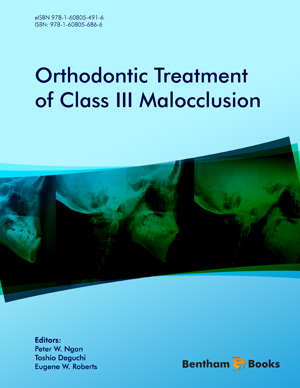Abstract
The Class III facial asymmetry, mandibular deviation and its related surgical orthodontic treatment will be discussed in this chapter. The number of orthodontic patients with a diverted bite and/or facial asymmetry has been increasing recently. Diagnosis and treatment for Class III patients with facial asymmetry and/or mandibular deviation tend to be more complex than those without asymmetric mandible are. Orthodontists have to discriminate between asymmetric problems of dental nature as opposed to skeletal origin. For instance, the amount of dentoalveolar compensation in the molar region should be part of the diagnosis. Management of the developing Class III malocclusion with mandibular deviation is important since malocclusion tends to deteriorate with growth. On the other hand, skeletal Class III patients are frequently accompanied by facial asymmetry or midline deviations and some eventually need surgical orthodontic treatment. In this chapter, the authors will review the literatures on prevalence of orthodontic asymmetries, possible changes in Class III mandibular deviation with age, morphological features of Class III mandibular deviation, including three-dimensional evaluation and perception of facial asymmetry. In addition, Class III facial asymmetry cases treated with orthognathic surgery will be introduced. Since twojaw surgery has been recently indicated, more often than before for better outcomes, surgical orthodontic cases corrected with one-jaw or two-jaw surgery will be discussed. Postoperative changes of the frontal facial appearances in skeletal Class III patients with deviation will be compared between one-jaw and two-jaw surgeries as well as postoperative stability of Class III cases with facial asymmetry that surgically treated.
Keywords: Facial asymmetry, Mandibular deviation, Prevalence of facial asymmetry and morphological deviation, Etiology of facial asymmetry and morphological deviation, Analysis and evaluation of facial asymmetry, Frontal cephalogram, Superimposition of frontal cephalograms, Perception of facial asymmetry, Questionnaire investigation of facial asymmetry, CT mages, Threedimensional (3D) analysis of morphological asymmetry, 3D deviation ratio, 3D morphological symmetry ratio, Deterioration of mandibular deviation with growth beyond prediction, Surgical Orthodontic treatment of Class III facial asymmetry, 3D analysis of dental casts using laser scanner, SSRO, IVRO, two-jaw surgery, 3D analysis of postoperative soft tissue changes.
















